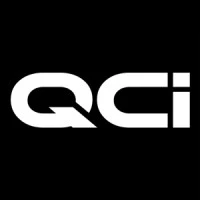QUBT Stock Analysis: Strong Momentum Amid Quantum Computing Growth and Speculative Risks
Summary
On July 16, 2025, QUBT closed at $18.40, showcasing strong technical momentum and favorable sector dynamics amid ongoing operational advancements in quantum computing, although it operates within a high-risk growth environment marked by significant speculative interest.
 Technical Analysis
Technical Analysis
QUBT closed at $18.40 on July 16, 2025, up 4.13% ($0.73), trading within an intraday range of $17.62-$18.58. The stock remains above its 50-day ($14.30) and 200-day ($8.70) moving averages, indicating a sustained medium- to long-term uptrend. Relative Strength Index (RSI) at 57 suggests the stock is neither overbought nor oversold, retaining room for further upside. The MACD value of 1.35 confirms bullish momentum over the last three months. Average True Range (ATR) near $9.48 indicates elevated volatility, consistent with the quantum computing sector’s speculative nature. Key technical support resides at $17.51, with resistance near $18.97. A stop-loss level around $17.78 is prudent, close to current support.
For the next trading day (July 17), the momentum and recent positive gap support a likely continuation of gains, potentially testing the $18.97 resistance level. Over the upcoming week, barring adverse headlines or profit-taking, QUBT could consolidate between $18.00 and $19.00, given volume remains near or above average.
Fundamental Analysis
Quantum Computing, Inc. operates at the cutting edge of quantum optics and integrated photonics. The company’s fundamental profile reveals ongoing losses, with trailing twelve months (TTM) EPS at -$0.54 and a negative P/E ratio of -35.40, reflective of a growth-stage technology firm investing heavily in R&D and commercialization. Its market capitalization stands at approximately $2.69 billion.
Notably, recent news highlights substantial operational progress including securing a $332,000 purchase order from a Top 5 U.S. Bank for quantum cybersecurity technology and scaling chip production. The company's stock surged 175% in the past three months, demonstrating strong market interest amid intensifying competition in quantum computing hardware.
The provided discounted cash flow (DCF) valuation of roughly $0.79 per share contrasts sharply with the current market price, implying the market is pricing in significant future growth and speculative potential beyond current cash flow metrics. Analysts’ consensus target price is $10, which is well below the current price, suggesting potential overvaluation in a purely fundamental sense.
Intrinsic Value and Long-term Investment Potential
Quantum Computing, Inc. occupies a nascent and highly prospective technology sector. Traditional intrinsic valuation models, reflected in the low DCF, undervalue the disruptive potential and intellectual property accumulated by the firm. Quantum computing’s path to profitability remains uncertain with substantial capital expenditure ahead, yet successful scaling and industry adoption could exponentially increase intrinsic value over the long term.
Long-term investors should weigh technological milestones, market penetration, and partnerships—such as the recent bank order—as indicators of progress toward commercial viability. However, absent profitability and with high volatility, the stock embodies significant execution and technological risks that may result in sizable share price fluctuations.
Overall Evaluation
QUBT registers as a *Buy* candidate based on technical momentum and positive sector dynamics driving speculative enthusiasm. The stock’s current price reflects aggressive growth expectations beyond present fundamentals. Short-term upside is supported by breakout trading and favorable news flow, while long-term appreciation hinges on successful commercialization of quantum technologies.
The high volatility and negative earnings caution conservative investors, but the stock’s leadership position in a cutting-edge industry and recent operational catalysts favor accumulation at controlled risk levels with clearly defined stops. The divergence between market price and fundamental valuation highlights the premium paid for future innovation and growth optionality.



 Sign In
Sign In